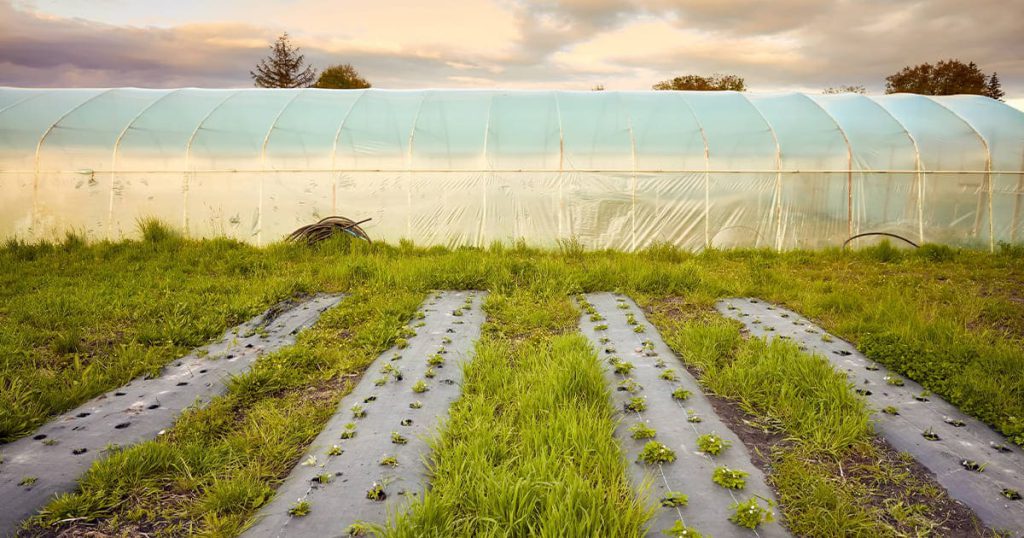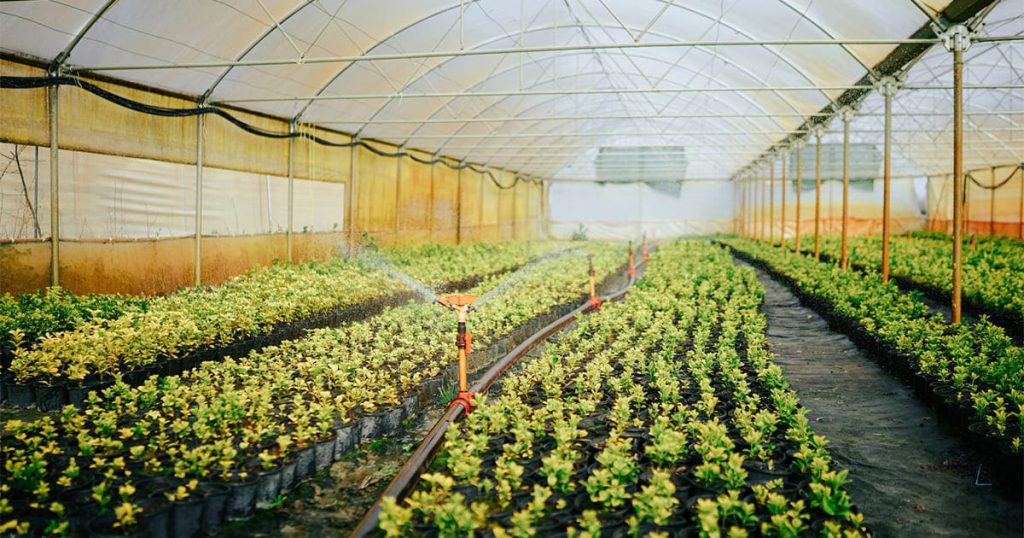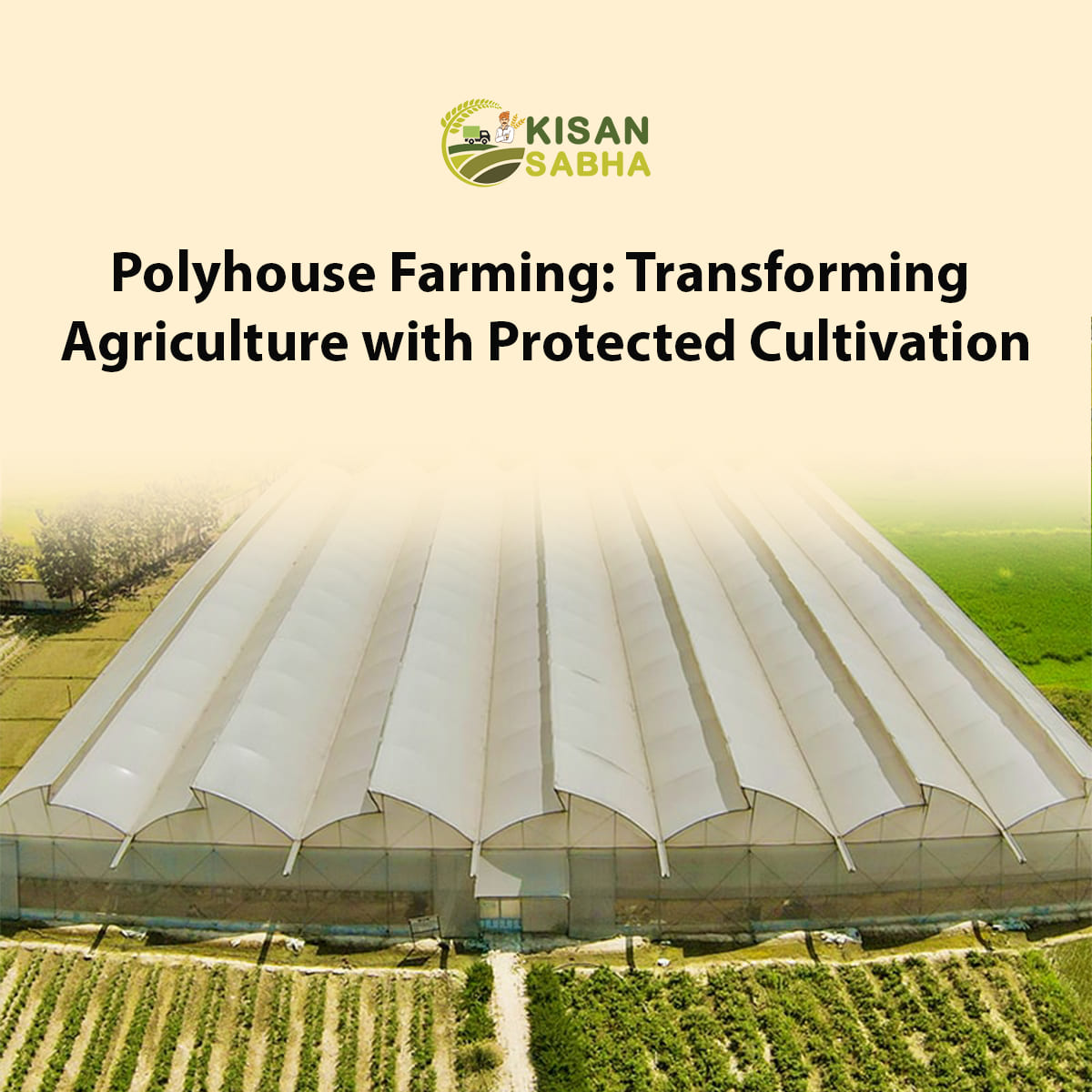Hey there, fellow farmers! Are you tired of battling unpredictable weather, pest attacks, and low crop yields? Moreover, what if I told you there’s a farming method that can help you grow crops year-round, protect them from harsh conditions, and potentially increase your income? Furthermore, welcome to the world of polyhouse farming – a game-changing agricultural technique revolutionizing how we grow crops in India.
What is a Polyhouse?
Simply put, a polyhouse is like a protective home for your plants. Additionally, it’s a structure covered with transparent or translucent materials like polyethylene or polycarbonate sheets, creating a controlled environment for crop cultivation. Consequently, this method allows farmers to grow crops throughout the year, regardless of external weather conditions.

Types of Polyhouses
Low-Cost Polyhouse
- Simple design
- Made with local materials
- Suitable for small farmers
- Minimal investment required
Medium-Cost Polyhouse
- Better structural integrity
- More advanced climate control
- Improved crop protection
- Moderate investment
Hi-Tech Polyhouse
- Advanced technology
- Automated climate control
- Precision irrigation systems
- Suitable for commercial farming
- Higher initial investment
Also Read:- Regenerative Agriculture & Technology for Sustainable Food
Advantages of Polyhouse Farming
Weather Protection
- Shields crops from extreme temperatures
- Prevents damage from:
- Heavy rainfall
- Strong winds
- Hailstorms
- Intense sunlight
Pest and Disease Control
- Reduces pest attacks
- Minimizes disease transmission
- Creates a barrier against external contamination
- Allows for easier pest management
Year-Round Cultivation
- Grow crops throughout the year
- Independence from seasonal limitations
- Multiple crop cycles
- Consistent income generation
Water Conservation
- Controlled irrigation systems
- Reduced water wastage
- Precise water management
- Drip irrigation compatibility
Higher Crop Yield
- Optimal growing conditions
- Increased crop quality
- Better fruit and vegetable size
- Improved crop uniformity

Suitable Crops for Polyhouse Farming
Vegetables
- Tomatoes
- Cucumbers
- Capsicum
- Chili peppers
- Leafy greens
- Broccoli
- Cauliflower
Fruits
- Strawberries
- Exotic berries
- Melons
- Passion fruit
Flowers
- Roses
- Carnations
- Gerberas
- Orchids
Herbs
- Basil
- Mint
- Coriander
- Parsley
Cost Breakdown
Initial Investment
- Low-Cost Polyhouse
- Size: 200-500 sq. meters
- Investment: ₹1,50,000 – ₹3,00,000
- Medium-Cost Polyhouse
- Size: 500-1000 sq. meters
- Investment: ₹3,00,000 – ₹7,00,000
- Hi-Tech Polyhouse
- Size: 1000+ sq. meters
- Investment: ₹7,00,000 – ₹20,00,000
Recurring Costs
- Irrigation
- Climate control
- Pest management
- Electricity
- Labor
Government Subsidies and Support
Central Government Schemes
- Mission for Integrated Development of Horticulture (MIDH)
- Pradhan Mantri Krishi Sinchayee Yojana (PMKSY)
- Subsidies up to 50-70% of project cost
State-Specific Support
- Additional subsidies
- Training programs
- Technical assistance
- Loan facilities
Setting Up a Polyhouse: Step-by-Step Guide
Site Selection
- Flat, well-drained land
- Good sunlight exposure
- Access to water
- Protection from strong winds
Design and Structure
- Choose the appropriate polyhouse type
- Select a suitable covering material
- Plan internal layout
- Consider crop-specific requirements
Basic Infrastructure
- Irrigation system
- Ventilation
- Shading mechanisms
- Climate control equipment
Crop Selection
- Understand local market demand
- Consider climate suitability
- Evaluate profitability
- Start with easier crops
Technical Knowledge
- Attend training programs
- Consult agricultural experts
- Learn modern cultivation techniques
- Stay updated with the latest technologies
Climate Control Techniques
Ventilation
- Natural ventilation
- Exhaust fans
- Side wall openings
- Roof ventilation
Cooling Systems
- Pad and fan system
- Misting arrangement
- Shade nets
- Evaporative cooling
Heating Options
- Solar heating
- Electric heaters
- Biomass heating
- Thermal screens
Challenges and Solutions
High Initial Investment
- Start small
- Seek government subsidies
- Explore group farming
- Gradual expansion
Technical Knowledge
- Attend workshops
- Online training
- Consult agricultural experts
- Learn from successful farmers
Maintenance
- Regular cleaning
- Equipment checks
- Pest monitoring
- Continuous learning
Economic Potential
Income Generation
- Higher crop prices
- Multiple crop cycles
- Reduced crop losses
- Premium quality produce
Market Opportunities
- Local markets
- Export potential
- Restaurants
- Retail chains
- Online platforms
Environmental Benefits
- Reduced water consumption
- Minimal pesticide use
- Lower carbon footprint
- Sustainable farming practices
Successful Implementation Tips
- Start with small-scale projects
- Choose suitable crops
- Invest in training
- Maintain proper record-keeping
- Be patient and persistent
- Continuously upgrade skills
Conclusion
Polyhouse farming isn’t just a technique – it’s a revolution in agricultural practices. Moreover, it offers farmers a powerful tool to overcome traditional farming challenges. Furthermore, by embracing this method, you’re not just growing crops; you’re growing opportunities.
Consequently, whether you’re a small farmer or an agricultural entrepreneur, polyhouse farming can be your path to:
- Increased income
- Sustainable agriculture
- Climate-resilient farming
- Food security
The future of farming is protected, precise, and promising. Are you ready to step into this exciting world of polyhouse cultivation?
Let’s grow together, one polyhouse at a time!




